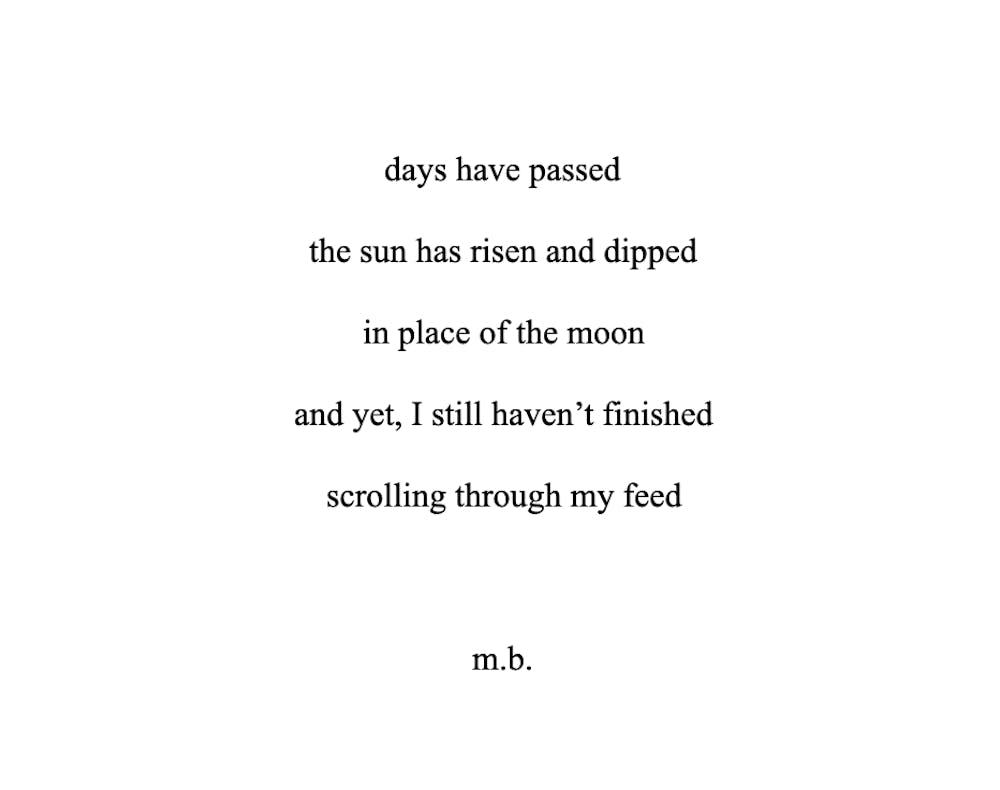Sometimes we come across a piece of literature, whether it be a line stolen from the middle of a library book or the fiction section of the New Yorker, that inadvertently resonates with us. Maybe its simplicity struck deeper than upon first glance, or it perfectly wrapped up the melancholic elegy you were reading. It is these lines that we cling to, turning them over when we let our minds wander, or carefully selecting them for our high school senior quotes. What does it mean, however, when the collection of quotes you have curated does not derive from English class, or your favorite Walt Whitman piece?
What if it came from Instagram?
Sandwiched between pictures of puppies and grain–embellished selfies of your friends, the idea of Instagram poetry is an interesting one. Usually identified by its brevity as each poem often consists of three to five lines, each Instagram poem sports a simple black font over a white background. In its appearance alone, it seems to capture the tangible aspect of literature, by looking as if it came from a page in a book, despite the reality of a Microsoft Word screenshot.
This is not to say, however, that the genre should be dismissed for its existence in the solely virtual. Many writers take to social media not only for its ease of access, but also a guaranteed audience of millions—whether or not anyone is actually reading it. But if you strike the right chord, it can lead to success in the physical world. Rupi Kaur, a young Punjabi–Sikh poet from Toronto, utilized Instagram to share her words on heavy topics such as sexual violence and alcoholism, and was surprised to see how fast her career coalesced her passion. Releasing Milk and Honey in 2014, the poetry collection garnered praise for its authenticity, simplicity, and awareness.
But, like everything else posted online, the poet’s work became subject to criticism. Many took the inspiration from the brief format and used the same style to write out amusing lines, quotes from infamous Vines, or to simply make fun of Kaur’s use of detail and simplicity. This overlap between literature and social media crafts an entirely new relationship for not only Instagram poets but all content creators. It shows that when you present your project to a seemingly infinite crowd, it now belongs to everyone who can access it—versus the act of going to a bookstore and purchasing a leather–bound physical copy of your hard work.
Memes aside, is that necessarily a bad thing? Sure, maybe Instagram poetry isn't challenging the likes of the classic literary canon, but is that what it's trying to do? The answer—not likely. Not to dismiss the work of the writers, but being able to mass–produce hundreds of short inspirational blurbs pales in comparison to the process of spending months fine–tuning a poem, let alone a collection, before sending it to publishers in an attempt at discovery. By relishing in its bite–sized existence, curtailed Instagram poetry favors instant gratification over authentic literature. It still has value, albeit a nontraditional one that may garner more parodies than prizes.
So maybe the lines that you cling to come from Cummings or Kaur. Maybe your daily dose of lyricism comes at breakfast time, when you’re scrolling through your feed, or late into the night bundled with Bukowski. As long as poetry continues to be read, it will always remain relevant—regardless of how many likes it accumulates.







